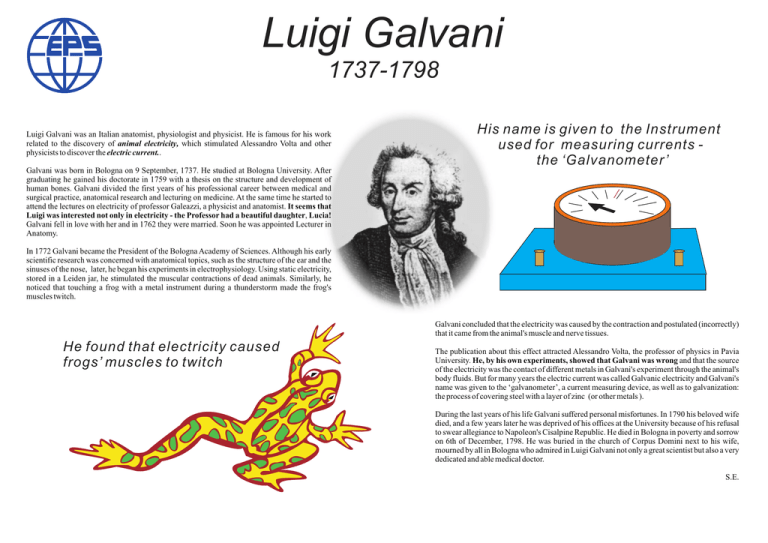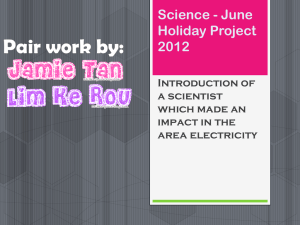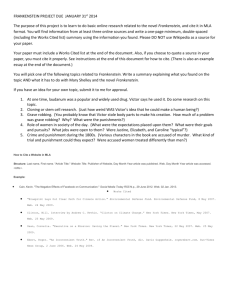Luigi Galvani: Biography of the Animal Electricity Pioneer
advertisement

Luigi Galvani 1737-1798 Luigi Galvani was an Italian anatomist, physiologist and physicist. He is famous for his work related to the discovery of animal electricity, which stimulated Alessandro Volta and other physicists to discover the electric current.. Galvani was born in Bologna on 9 September, 1737. He studied at Bologna University. After graduating he gained his doctorate in 1759 with a thesis on the structure and development of human bones. Galvani divided the first years of his professional career between medical and surgical practice, anatomical research and lecturing on medicine. At the same time he started to attend the lectures on electricity of professor Galeazzi, a physicist and anatomist. It seems that Luigi was interested not only in electricity - the Professor had a beautiful daughter, Lucia! Galvani fell in love with her and in 1762 they were married. Soon he was appointed Lecturer in Anatomy. His name is given to the Instrument used for measuring currents the ‘Galvanometer ’ In 1772 Galvani became the President of the Bologna Academy of Sciences. Although his early scientific research was concerned with anatomical topics, such as the structure of the ear and the sinuses of the nose, later, he began his experiments in electrophysiology. Using static electricity, stored in a Leiden jar, he stimulated the muscular contractions of dead animals. Similarly, he noticed that touching a frog with a metal instrument during a thunderstorm made the frog's muscles twitch. Galvani concluded that the electricity was caused by the contraction and postulated (incorrectly) that it came from the animal's muscle and nerve tissues. He found that electricity caused frogs’ muscles to twitch The publication about this effect attracted Alessandro Volta, the professor of physics in Pavia University. He, by his own experiments, showed that Galvani was wrong and that the source of the electricity was the contact of different metals in Galvani's experiment through the animal's body fluids. But for many years the electric current was called Galvanic electricity and Galvani's name was given to the ‘galvanometer’, a current measuring device, as well as to galvanization: the process of covering steel with a layer of zinc (or other metals ). During the last years of his life Galvani suffered personal misfortunes. In 1790 his beloved wife died, and a few years later he was deprived of his offices at the University because of his refusal to swear allegiance to Napoleon's Cisalpine Republic. He died in Bologna in poverty and sorrow on 6th of December, 1798. He was buried in the church of Corpus Domini next to his wife, mourned by all in Bologna who admired in Luigi Galvani not only a great scientist but also a very dedicated and able medical doctor. S.E.


